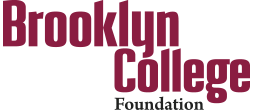It’s really never too early – or too late – to do retirement planning.
On the one hand, the younger you are, the more you benefit from a longer period of time to accumulate assets and invest them, as well as think about how best to spend them once you finally retire. Even if you make some mistakes in the process or become preoccupied with other matters for a year or two, time will generally be your friend.
If, on the other hand, you’ll soon be retiring or have perhaps retired already, you’ll want to use the time and resources you have wisely. Still, with a few adjustments here and there, you may well be able to make your retirement years more enjoyable.
Whatever your circumstances, be sure to consult professionals with expertise in areas such as:
- investments
- taxes
- budgeting and cash management
- various types of insurance
- estate planning
- medical, social, and other services geared toward older persons
With this in mind, the Brooklyn College Foundation offers the following list of basic points to consider. Don’t forget to check out number five toward the end of the list!
1. Determine how you’d like to spend your retirement years. Although many people travel, devote more attention to family and friends, increase their volunteer involvement, or concentrate on hobbies and leisure activities, you should feel free to settle on your own mix of passions and pastimes. Just remember that retirement can have several phases as you age, so allow for both the development of new interests, as well as the possible need to accommodate eventual changes in health and mobility.
2. Try to get a good sense of what your desired lifestyle will cost. In large measure, this will be a function not only of what you want to do, but also where you live – both the part of the country (or the world) in which you choose to settle and the nature of the four walls you’ll be calling home. Recognize too that you won’t necessarily live in the same place throughout retirement. Moreover, continue to budget for things that are elements of your life currently such as personal and health care expenses (Medicare won’t cover all of them!), food, clothing, transportation, emergencies, and our seemingly constant companion: inflation.
3. Save as much as you reasonably can and invest appropriately. True, particularly if you have in mind a modest lifestyle in retirement, it’s possible to “over-save.” Yet people often underestimate – sometimes significantly – what their desired lifestyle will cost. Others may be quite realistic about what they will need but have difficulty putting enough aside over the years or fail to manage responsibly whatever wealth they have been able to amass. Whatever your situation, building your nest egg should be a high priority.
4. To the extent possible, maximize the financial resources you can draw upon in retirement. A number of options exist, among them:
Defined-benefit pensions – These are traditional pensions and even though fewer and fewer workers have this perk, it is quite a valuable one, as your employer covers the full cost and what you receive will usually be very reliable. Payments are fully taxable as ordinary income.
Defined-contribution plans – These are sponsored by employers and generally take the form of so-called qualified retirement plans, such as 401(k) and 403(b) plans, or some types of IRAs, such as SEP and SIMPLE IRAs. These plans feature limits on how much can go in each year and are typically funded with some combination of contributions made by your employer and pre-tax portions of your salary or wages. Account balances grow tax-free, but distributions are fully taxable as ordinary income.
Traditional IRAs – Depending on your level of income, traditional IRAs can be funded with your own pre-tax money or, less commonly, after-tax money. Traditional IRAs can also receive money “rolled over” on a tax-free basis from employer sponsored plans, such as 401(k) plans. Account balances grow tax-free. When distributions from a traditional IRA are taken, they will be taxable as ordinary income in proportion to the amount of pre-tax money you contributed or rolled over.
Roth IRAs – These, too, are funded with your own money, specifically after-tax dollars. This means that both earnings and distributions come out tax-free. Also, whatever remains in the account grows tax-free. Note: Some employers offer Roth 401(k) plans, although these are relatively rare.
Tax-deferred annuities – As the name suggests, after-tax money of your own that you invest in these products grows tax-free. Any increase in value beyond the amount you invested is taxable as ordinary income when distributed.
Individually owned savings and investment accounts, certificates of deposit, etc. – These are funded with after-tax dollars, plus whatever you earn is taxable. Some of these investments produce capital gains, which are generally taxed more favorably than interest and other sorts of ordinary income.
Employment – For some people, “retirement” means continuing to work a bit longer, albeit on a part-time basis. Similarly, working full time for an extra year or two can make additional assets available for use in connection with one or more of the options above.
Social Security benefits – Despite concerns about the long-run health of the social security system and the size of benefits one can count on, this extremely common form of retirement cash flow definitely needs to be taken into account.
Non-financial assets – Things that save you money can be just as valuable as a stream of payments. Examples would include good health, smart purchasing, and having loved ones nearby and available to help when needed.
Regardless of the combination of options you assemble and draw upon, be sure to seek competent professional guidance, as the tax rules can be complex and subject to change and the investment challenges considerable. For instance, decisions about things such as when to begin drawing social security payments or whether to roll retirement plan assets into an IRA will require careful planning.
5. Don’t overlook ways of supporting the Brooklyn College Foundation that result in retirement cash flow. Especially if you are precluded from making additional contributions to your IRA or qualified retirement plan, a charitable life income plan can be an attractive supplement to existing arrangements. Here are some of your choices:
- A charitable gift annuity makes favorably-taxed payments to you (or to you and your spouse) for life, plus you receive an immediate income tax charitable deduction, providing tax savings if you itemize. If you’re still working, you can defer the start of the payments, whereas if you are retired, you’ll likely want the payments to begin immediately.
- A charitable remainder trust is similar to a gift annuity in some respects, since both can provide income for life, but offers greater flexibility. This can be very appealing if you don’t need additional income now but would like to secure a source of payments in retirement, and also provides an immediate income tax charitable deduction.
- If you are age 70½ or older, you can make a Qualified Charitable Distribution (QCD), also known as a charitable IRA rollover, to the Brooklyn College Foundation directly from your traditional or Roth IRA of up to $108,000 in 2025, and the gift will not be counted in your income. Once you are 73 or older a QCD will satisfy your annual minimum required distribution and permit a tax-free gift of up to $108,000 to the Brooklyn College Foundation. Separately, drawing on assets in an IRA or a qualified retirement plan to make current gifts to the Brooklyn College Foundation can sometimes make sense for anyone over age 59½, although careful planning is required.
Finally, because retirement planning vehicles such as defined-contribution plans, tax-deferred annuities, and many IRAs contain income that has never been taxed, you’ll want to devote attention to your beneficiary designations.
Previously untaxed amounts left to family members and other individuals will be taxed when received by them but are not subject to tax when received by the Brooklyn College Foundation, which is a tax-exempt entity. Likewise, tax savings can be combined with providing for heirs when certain retirement plan assets are used for a gift annuity or a charitable remainder trust at the end of your life.
Now that we’ve given you plenty to think about, please let us know if we can be of any assistance to you and your advisers!

